This article was co-authored by wikiHow staff writer, Janice Tieperman. Janice is a professional and creative writer who has worked at wikiHow since 2019. With both a B.A. and M.A. in English from East Stroudsburg University, she has a passion for writing a wide variety of content for anyone and everyone. In her free time, you can find her working on a new crochet pattern, listening to true crime podcasts, or tackling a new creative writing project.
There are 10 references cited in this article, which can be found at the bottom of the page.
The wikiHow Video Team also followed the article's instructions and verified that they work.
This article has been viewed 144,995 times.
Learn more...
Move over, tofu—wheat gluten is another vegetarian-friendly source of protein that can make a tasty addition to your snacks and meals. You can easily make gluten at home with whole wheat flour and water. Or, create dough using vital wheat gluten, which you can find in stores. Use either homemade or prepared wheat gluten to make seitan, a protein-rich vegetarian staple.
Ingredients
- 9 cups (1350 g) of whole wheat flour
- 3 c (710 mL) of cold water
- 1 cup (128 g) of vital wheat gluten
- 3 US tbsp (28 g) of yeast
- 1⁄2 c (120 mL) of vegetable broth
- 1⁄4 c (59 mL) of liquid amino acid
- 1 US tbsp (15 mL) of olive oil
- 1½ tsp (4.2 g) of minced garlic
- 4 c (950 mL) of vegetable broth
- 4 c (950 mL) of water
- 1⁄4 c (59 mL) of tamari
Makes 3 servings (needs 1 lb (0.45 kg) of dough)
Steps
Homemade Wheat Gluten
-
1Mix the flour and water together into a dough. Set out a big mixing bowl and measure out 9 cups (1350 g) of whole wheat flour. Pour 3 c (710 mL) of water into the flour, which will help you form a nice, firm dough. Knead the ingredients together or mix them with a stand mixer until you have a big ball of dough on your hands.[1]
- This process involves “draining” this ball of dough until only the gluten is leftover.
- You may need to make this in batches.
-
2Submerge the dough in cold water for 4-8 hours. Set your dough in the same mixing bowl, covering it all the way with cold water. Leave the dough somewhere in your kitchen so it can soak for at least 4 hours.[2]
- This soaking period helps the gluten form in the dough.
Advertisement -
3Rinse the dough until the water is running clear. Set the bowl in the sink, pouring out the extra water. Turn on your tap and pour cold water over the dough, kneading it with your hands as you go. Keep pouring water over the dough until it looks clear instead of murky. At this point, you’ll notice your ball of dough getting smaller and smaller.[3]
- The goal of this is to rinse everything but the gluten from the bread.
- This usually takes around 10 minutes to do.[4]
-
4Soak the dough in cold water for several minutes and drain it. This gives your gluten a chance to harden after all of the rinsing, so it’ll be easier to work with.[5] Once you’ve given the new dough a good soak, pour it into a mesh sieve so you can drain out any leftover water.[6]
- It helps to prop the sieve over a bowl, which will catch all the leftover water.
- This recipe will give you about 1 lb (0.45 kg) of seitan. Generally, 12 oz (340 g) of whole wheat flour will produce 5 oz (142 g) of wheat gluten.
-
5Cut the dough into small pieces if you’re making seitan. Grab a pair of kitchen scissors and snip the dough into small, dumpling-sized pieces. Work your way through the entire ball dough so your wheat gluten is ready to cook![7]
- You can always break the dough apart with your hands, as well.
- Only use 1 lb (0.45 kg) of the dough for this.
Vital Wheat Gluten Dough
-
1Mix vital wheat gluten, yeast, liquid amino acid, and broth into a ball shape. Pour 1 cup (128 g) of vital wheat gluten into a mixing bowl, along with 3 US tbsp (28 g) of yeast. Stir in 1⁄2 c (120 mL) of vegetable broth and 1⁄4 c (59 mL) of liquid amino acid to help create a nice dough consistency. As a finishing touch, mix in 1 US tbsp (15 mL) of olive oil, along with 1½ (4.2 g) of minced garlic. [8]
- Nutritional, powdered yeast works well for this.
- The garlic helps add a little extra flavor to the dish.
-
2Work the dough until it has a rubbery texture. Knead the dough with your hands, meshing all the ingredients together into a firm ball. Once the dough feels rubbery, you can take a break in your kneading.[9]
-
3Knead the dough and let it rest. Work your fingers through the dough, kneading the dough at least 2 dozen times. Then, wait up to 5 minutes for the dough to rest. Give the dough a good kneading a dozen more times, then wait 10 minutes for the dough to rest.[10]
- Wetting your hands makes it easier to work with the dough.
- Kneading and resting the dough helps the gluten to activate and relax, which makes your seitan dough easier to work with.[11]
-
4
-
5Flatten each chunk of dough into a 1⁄2 in (1.3 cm) thick patty. Press down on each piece of dough with your hands, turning the dough into a patty. Eyeball the sides of each patty to make sure they’re about 1⁄2 in (1.3 cm) thick, which is ideal for cooking.[14]
Seitan Recipe
-
1Boil vegetable broth, tamari, and water in a big pot. Set a big pot on your stove and pour in 4 c (950 mL) of broth and 4 c (950 mL) of water, which will serve as the cooking base for your wheat gluten.[15] For some extra savory flavor, stir in 1⁄4 c (59 mL) of tamari, a Japanese soy sauce. Turn on your stovetop to high heat and wait for the mixture to boil.[16]
-
2Transfer the wheat gluten dough to the boiling water while letting the pot vent. Carefully move your patties or pre-cut pieces of dough into the boiling mixture. Once all of the pieces are in the boiling broth, leave the pot lid slightly off-kilter so the steam can vent.[17]
- Tongs are a great way to transfer the gluten pieces while protecting yourself from hot water splashing back.
-
3Adjust the heat to low and let the patties simmer for 1 hour. Cooking seitan is a bit of a slow-going process, so the broth mixture doesn’t need to be boiling constantly. Instead, flip over your gluten patties or pieces once or twice, so everything’s evenly cooked. Set a cooking timer for 1 hour, so you know when to turn off the heat.[18]
- Let your seitan pieces simmer for at least 45 minutes.[19]
-
4Wait 15 minutes for the patties to cool before eating them. Turn off the heat and remove the pot. Move the pot to a separate, cooler area so the broth mixture and wheat gluten stop booking. Give the seitan a few minutes to cool off in the broth mixture—after this, you can serve and enjoy your wheat gluten![20]
- If you have any leftover seitan pieces, place them in a container submerged in leftover broth.
Community Q&A
Did you know you can get answers researched by wikiHow Staff?
Unlock staff-researched answers by supporting wikiHow
-
QuestionCan flour be used for seitan without being rinsed?
 wikiHow Staff EditorThis answer was written by one of our trained team of researchers who validated it for accuracy and comprehensiveness.
wikiHow Staff EditorThis answer was written by one of our trained team of researchers who validated it for accuracy and comprehensiveness.
Staff Answer wikiHow Staff EditorStaff Answer
wikiHow Staff EditorStaff Answer -
QuestionHow do I powder wheat gluten so I can add it to all purpose flour?
 wikiHow Staff EditorThis answer was written by one of our trained team of researchers who validated it for accuracy and comprehensiveness.
wikiHow Staff EditorThis answer was written by one of our trained team of researchers who validated it for accuracy and comprehensiveness.
Staff Answer wikiHow Staff EditorStaff Answer
wikiHow Staff EditorStaff Answer -
QuestionCan I use all purpose flour to make wheat gluten? What is the best flour to use?
 wikiHow Staff EditorThis answer was written by one of our trained team of researchers who validated it for accuracy and comprehensiveness.
wikiHow Staff EditorThis answer was written by one of our trained team of researchers who validated it for accuracy and comprehensiveness.
Staff Answer wikiHow Staff EditorStaff Answer
wikiHow Staff EditorStaff Answer
Warnings
- If a recipe calls for wheat gluten powder, it’s best to use actual powder for your dish. This will be a lot easier to mix in with the other ingredients.⧼thumbs_response⧽
Things You'll Need
Homemade Wheat Gluten
- Bowl
- Cold water
- Mesh sieve
- Kitchen scissors
Vital Wheat Gluten Dough
- Bowl
Seitan Recipe
- Large pot
References
- ↑ https://eatingrules.com/how-to-make-seitan/
- ↑ https://eatingrules.com/how-to-make-seitan/
- ↑ https://m.youtube.com/watch?v=s9vHa66Bm5E&t=3m34s
- ↑ https://eatingrules.com/how-to-make-seitan/
- ↑ https://m.youtube.com/watch?v=s9vHa66Bm5E&t=4m
- ↑ https://m.youtube.com/watch?v=s9vHa66Bm5E&t=4m20s
- ↑ https://m.youtube.com/watch?v=s9vHa66Bm5E&t=4m36s
- ↑ https://www.allrecipes.com/recipe/238521/basic-seitan-wheat-meat-vegan-meat-substitute/
- ↑ https://www.allrecipes.com/recipe/238521/basic-seitan-wheat-meat-vegan-meat-substitute/
- ↑ https://www.epicurious.com/recipes/member/views/FAST-EASY-HOMEMADE-SEITAN-1220052
- ↑ https://daughterofseitan.com/the-easiest-seitan-for-beginners/
- ↑ https://www.allrecipes.com/recipe/238521/basic-seitan-wheat-meat-vegan-meat-substitute/
- ↑ https://www.epicurious.com/recipes/member/views/FAST-EASY-HOMEMADE-SEITAN-1220052
- ↑ https://www.allrecipes.com/recipe/238521/basic-seitan-wheat-meat-vegan-meat-substitute/
- ↑ https://www.allrecipes.com/recipe/238521/basic-seitan-wheat-meat-vegan-meat-substitute/
- ↑ https://m.youtube.com/watch?v=s9vHa66Bm5E&t=2m31s
- ↑ https://www.allrecipes.com/recipe/238521/basic-seitan-wheat-meat-vegan-meat-substitute/
- ↑ https://www.allrecipes.com/recipe/238521/basic-seitan-wheat-meat-vegan-meat-substitute/
- ↑ https://www.epicurious.com/recipes/member/views/FAST-EASY-HOMEMADE-SEITAN-1220052
- ↑ https://www.allrecipes.com/recipe/238521/basic-seitan-wheat-meat-vegan-meat-substitute/
- ↑ https://m.youtube.com/watch?v=s9vHa66Bm5E&t=4m22s
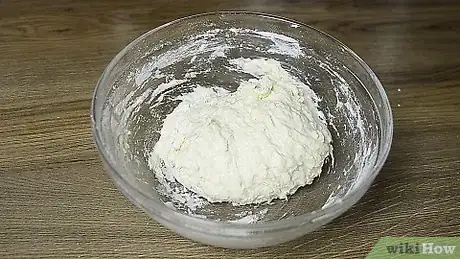
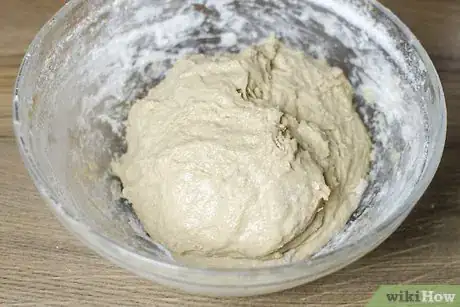
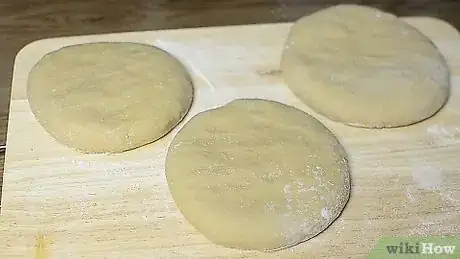
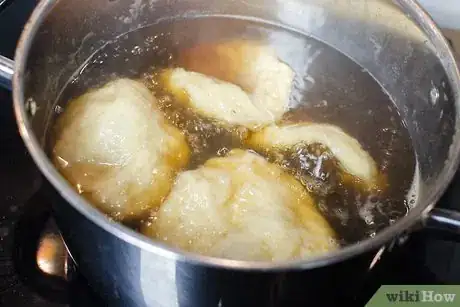



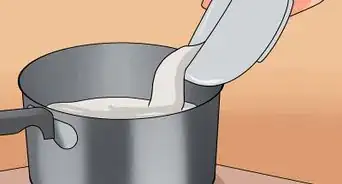

















































Medical Disclaimer
The content of this article is not intended to be a substitute for professional medical advice, examination, diagnosis, or treatment. You should always contact your doctor or other qualified healthcare professional before starting, changing, or stopping any kind of health treatment.
Read More...